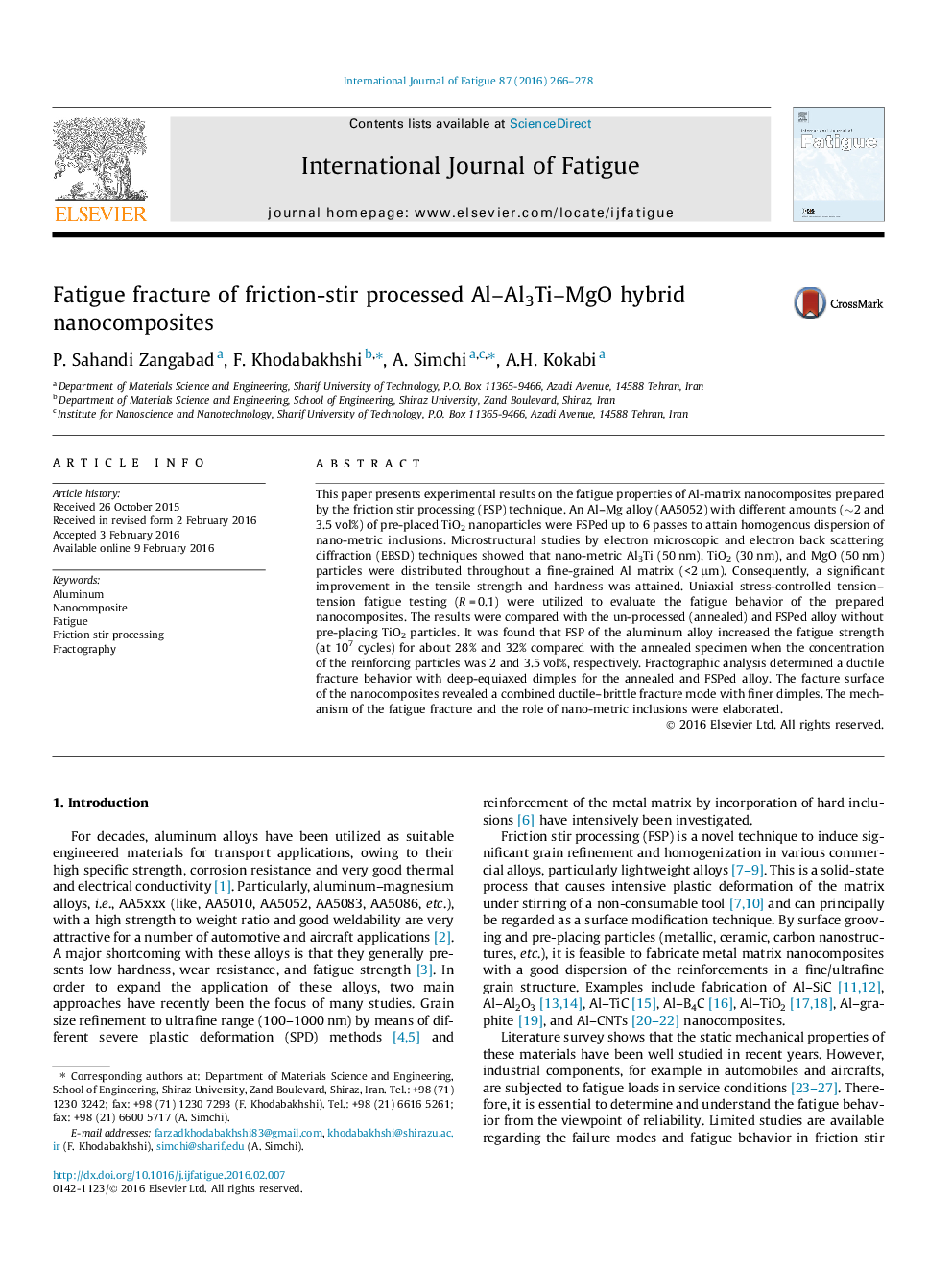| Article ID | Journal | Published Year | Pages | File Type |
|---|---|---|---|---|
| 778094 | International Journal of Fatigue | 2016 | 13 Pages |
•A fine grained in situ Al–Mg matrix nanocomposite was processed via reactive FSP.•Microstructural features, tensile, and fatigue performance of the prepared nanocomposite were assessed.•Fatigue strength of the FSPed nanocomposites was improved continuously via incorporation of nanoparticles.•Ductile fracture behavior with deep-equiaxed dimples on fracture surfaces was observed for Al–Mg alloys.•A combined ductile-brittle behavior on fatigue loading was noticed for nanocomposites with finer features.
This paper presents experimental results on the fatigue properties of Al-matrix nanocomposites prepared by the friction stir processing (FSP) technique. An Al–Mg alloy (AA5052) with different amounts (∼2 and 3.5 vol%) of pre-placed TiO2 nanoparticles were FSPed up to 6 passes to attain homogenous dispersion of nano-metric inclusions. Microstructural studies by electron microscopic and electron back scattering diffraction (EBSD) techniques showed that nano-metric Al3Ti (50 nm), TiO2 (30 nm), and MgO (50 nm) particles were distributed throughout a fine-grained Al matrix (<2 μm). Consequently, a significant improvement in the tensile strength and hardness was attained. Uniaxial stress-controlled tension–tension fatigue testing (R = 0.1) were utilized to evaluate the fatigue behavior of the prepared nanocomposites. The results were compared with the un-processed (annealed) and FSPed alloy without pre-placing TiO2 particles. It was found that FSP of the aluminum alloy increased the fatigue strength (at 107 cycles) for about 28% and 32% compared with the annealed specimen when the concentration of the reinforcing particles was 2 and 3.5 vol%, respectively. Fractographic analysis determined a ductile fracture behavior with deep-equiaxed dimples for the annealed and FSPed alloy. The facture surface of the nanocomposites revealed a combined ductile–brittle fracture mode with finer dimples. The mechanism of the fatigue fracture and the role of nano-metric inclusions were elaborated.
